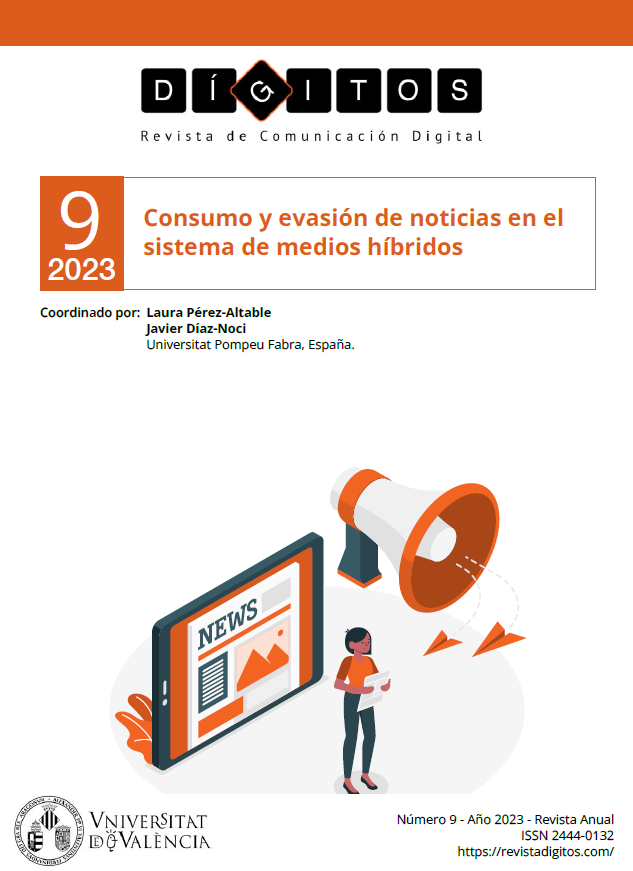Exposure to negative news leads to news avoidance and news saturation in Spain, according to research study
Exposure to negative news leads to news avoidance and news saturation in Spain, according to research study
Exposure to negative news leads to news avoidance and news saturation in Spain, according to research study
Laura Pérez-Altable and Javier Díaz-Noci coordinate a monographic volumen of Dígitos journal on News consumption and news avoidance in the hybrid media system
Dr Laura Pérez-Altable and Prof Javier Díaz-Noci, members of the DigiDoc group UPF, are the coordinators of the ninth issue of Digitos, a journal on communication published by the University of Valencia. The volume is devoted in its monographic section to analyze how people approach to the news and in a “multifaceted nature”. Precisely, the issue focuses on news consumption and news avoidance, two relevant topics both Pérez-Altable and Díaz-Noci are working on during the last few years, alongside with some other topics, such as inequality in accessing quality information.
The issue of Digitos includes an article by Pérez-Altable and Díaz-Noci themselves on “Exploring News Avoidance in the Spanish Hybrid Media Landscape”. We consider factors such as stress, information overload, media scepticism, and political polarisation that contribute to the users’ behaviour. One of the main conclusions is that there is “a significant decline in news interest in Spain” and that the country’s socio-political dynamics are also influential factors. The study is rooted to a great extent on the importance of “the emergence of populist movements and increasing political polarisation has given rise to a complex media environment that influences individuals’ media consumption patterns, characterised by an intense polarisation due to the emergence of extremist political entities and the ongoing contentiousness of identity issues”. This happens as, at the same time, a diminishing credibility of the media is observed.
Finally, occasional and incidental news exposure contributes to forming echo chambers, immediacy and ease of access to these platforms can expose users to unverified or false information.
Another phenomenon observed is news saturation, which “happens when users are constantly exposed to negative news, and this negative saturation can lead to news avoidance.” We have found that women and people with low media engagement experience a greater negative saturation and, as a result, they tend to avoid news.
These findings have implications for media literacy education, journalism, and understanding the role of the media in shaping public opinion, relevant topics to be analyzed in the next future.
Other articles include Francesca Rizzuto’s “News Consumption in Italy in an Era of Crisis and Innovation: The Decline of Print and TV News” and Gabriela Müggenburg’s “Time magazine’s “Finding Home” analysis: A case of storytelling innovation on distant suffering”. The issue is completed with a miscellaneous group of articles, including Maria José Acosta’s “Cómo salvar el periodismo: The Guardian y la evolución digital. De la tinta al pixel”, which traces the history of this very important online medium.

